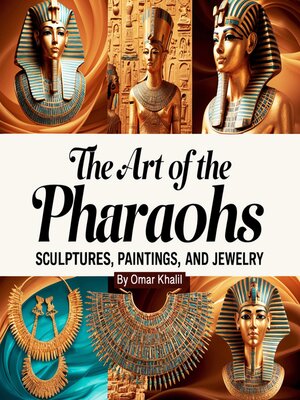
Sign up to save your library
With an OverDrive account, you can save your favorite libraries for at-a-glance information about availability. Find out more about OverDrive accounts.
Find this title in Libby, the library reading app by OverDrive.



Search for a digital library with this title
Title found at these libraries:
| Library Name | Distance |
|---|---|
| Loading... |
Ancient Egyptian art is one of the most iconic and influential art forms in history. Spanning over three millennia, it provides a deep insight into the culture, religion, and beliefs of ancient Egyptian society. The art of Egypt is characterized by its symbolic use of colors, the strict adherence to formal rules of representation, and its focus on the afterlife. It was primarily created for religious, funerary, and commemorative purposes, serving as a medium to honor the gods and pharaohs, as well as to ensure a successful passage into the afterlife for the deceased.
The origins of Egyptian art can be traced back to the early dynastic periods, where it evolved in response to both religious needs and political structures. As the power of the pharaohs grew, so did the complexity and grandeur of Egyptian art. The early works were heavily influenced by the religious beliefs that governed life and death. Art was not seen as a form of personal expression but rather as a tool to serve divine and societal purposes. The rigid style and symbolic representations seen in Egyptian art reflect the culture's focus on order, permanence, and the divine, rather than individualism or naturalism.
Key materials used in Egyptian art included stone, wood, and metals, often adorned with vibrant pigments. The Egyptians were skilled in creating sculptures, jewelry, and paintings that survived for thousands of years due to their mastery of preservation techniques. The most recognizable aspects of Egyptian art include the distinctive posture and proportions in their sculptures, as well as the use of vibrant, symbolic colors in their paintings. These works were often intended for tombs, temples, and other sacred spaces, ensuring the continued favor of the gods and providing a connection to the divine realm.







